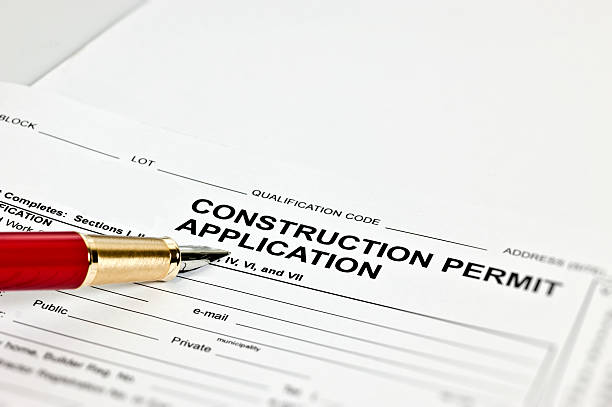Checklist for Ensuring Your Application Meets LPA Standards
In today’s digital-first world, ensuring that your application meets the required legal and compliance standards is crucial before it reaches the market. One of the most important benchmarks for mobile and web applications in India is LPA Approval. The Land and Property Act (LPA) guidelines are designed to ensure that applications, particularly those dealing with property, real estate, or related transactions, maintain transparency, accuracy, and security. Failing to comply can lead to legal complications, user distrust, and potential financial penalties.
If you’re a developer, entrepreneur, or business owner preparing your app for launch, having a structured checklist can make the LPA Approval process smoother and faster. Here’s a comprehensive guide to help you ensure your application aligns with LPA standards.
1. Understand the LPA Guidelines
Before you start preparing your app, it’s essential to have a clear understanding of the LPA standards. These standards cover aspects such as:
Legal compliance with property registration laws
Data protection and user privacy
Transparency in property listings or transactions
Verification mechanisms for documents and user identity
Take time to read the official LPA documentation or consult with legal experts who specialize in property laws. Familiarity with these regulations will help you design your app from the ground up in compliance with LPA standards.
2. Conduct a Thorough Legal Audit
A legal audit is the first step toward LPA Approval. This involves reviewing your app’s features, terms, and functionalities to ensure they comply with regulatory requirements. Consider the following:
Check if all property listings are verified and legally sound
Ensure contracts, agreements, or digital documents meet the required format
Verify that your app’s payment gateways comply with banking and transaction regulations
Engaging a legal professional to audit your app can significantly reduce the risk of rejection during the approval process.
3. Ensure Data Security and Privacy Compliance
LPA guidelines place a strong emphasis on protecting user data. Applications that handle sensitive property documents or personal information must have robust data security measures. Key considerations include:
Encrypting all user data and sensitive information
Implementing secure login and authentication protocols
Complying with Indian data protection laws, including the Digital Personal Data Protection Act (DPDPA)
A clear privacy policy within the app that informs users about data collection, storage, and usage can also enhance trust and improve chances of LPA Approval.
4. Incorporate Verification Mechanisms
Verification is a critical component for applications seeking LPA Approval. Your app should include mechanisms to authenticate:
User identities
Property ownership documents
Transaction records
Using third-party verification services or integrating digital signatures can strengthen the credibility of your application and streamline the approval process.
5. Optimize User Interface and Experience
While LPA standards primarily focus on legal and security compliance, user experience is indirectly related to approval. A clear, intuitive interface reduces errors, ensures better documentation handling, and demonstrates professionalism. Key tips include:
Provide clear instructions for uploading documents
Offer step-by-step guidance for property verification
Ensure smooth navigation and minimize friction in transactions
A well-designed app reflects the seriousness and reliability required by regulatory authorities.
6. Prepare Comprehensive Documentation
Applications seeking LPA Approval must submit detailed documentation. Ensure your documentation includes:
Technical details about your app’s architecture and functionalities
Security protocols and encryption methods
Legal compliance certifications
User manuals or guides highlighting verification and compliance features
Thorough documentation not only speeds up the approval process but also demonstrates transparency and readiness for audits.
7. Conduct Internal Testing
Before submitting your application for approval, conduct rigorous internal testing. Focus on:
Functionality: Ensure all features work as intended without errors
Compliance: Double-check that all legal and regulatory guidelines are followed
Security: Perform penetration testing and vulnerability assessments
Testing helps identify issues that could delay or block LPA Approval, ensuring a smoother process.
8. Engage With LPA Officials Early
Sometimes, delays in approval stem from miscommunication or misunderstanding of requirements. Engaging with LPA officials early in the development process can help:
Clarify any ambiguities in compliance standards
Seek guidance on documentation and verification processes
Avoid common pitfalls that lead to rejection
Proactive communication can save time and enhance the credibility of your application.
9. Keep Your App Updated
Regulatory standards are subject to change, and compliance is an ongoing process. After obtaining LPA Approval, ensure your application stays compliant by:
Regularly updating security measures
Monitoring regulatory changes and adjusting app features accordingly
Keeping all property data and documents current and verified
Continuous updates demonstrate your commitment to compliance and maintain user trust.
Conclusion
Obtaining LPA Approval is more than a regulatory checkbox—it’s a testament to your app’s credibility, security, and professionalism. By following this checklist, you can ensure that your application not only meets LPA standards but also delivers a seamless, trustworthy experience for users.
From understanding legal guidelines and conducting audits to implementing strong data security and verification measures, every step contributes to smoother approval and long-term compliance. With careful planning, thorough testing, and ongoing updates, your app can confidently achieve LPA Approval and set a benchmark in the property and real estate digital space.

